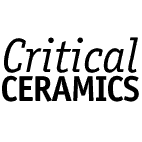









As of February 25, 1998 I am not actively making much personal work and no longer concentrating on gathering information on just Yagi Kazuo as I originally proposed. My apologies to Yagi, but since September, I’ve been thrust in to the enormous ceramic world of Japan. It’s big and vast. Yagi is definitely an important part of it, but to fully understand him and his place within it, I need to understand this world more completely as a whole.
The pottery towns that I’ve seen so far are Hagi, Koishiwara, Tachikui, and Arita. I’ve traveled to neighboring countries � to Jingdezhen in China and I spent a day at the National Folk Museum in Korea. As I try to focus on organizing and creating some structural order to Japanese ceramics, I’m realizing that I cannot do so without knowing about China and Korea. While at both countries, I was struck by the differences in table settings and dining styles. Physically being at these countries was very important. Books and museum collections provide much information but no matter how short the visit, being surrounded by each culture, I find deepened my sense of understanding. Most clay knowledge was imported to Japan, at times by force, from China and Korea and while the similarities in techniques and materials are apparent, so are the unique aesthetics of each place.
Within Japan, there is a whole array of regional styles with its own territorial clays, history, and traditions. They each speak of their own dialect complete with a rich visual vocabulary. This is something that is very different from ceramics in the U.S. Then there are also, what I call, the guilds. Many of these guilds were established after World War II and membership is another means of artistic identification. Sodeisha, the progressive group which Yagi was a founding member of, I learned, is a guild as well.
I’ve been fortunate to meet an array of potters, ceramic artists, artisans and academics. Some have strong ties to traditional potteries, some do not. It’s been fascinating to hear their interpretation and definition of ceramics. I’ve also been lucky enough to meet many artists who do not work with clay but in other mediums. They always help put thoughts in perspective.
Recently, I have been going to Kyushu Sangyo Daigaku which is not the university with which I’m affiliated, but my advisor introduced me to Professor Kanegae who teaches there and has a wonderful collection of books at his office. He spent a year in Kansas making his own work while researching American ceramic history. As a person/teacher, I find that I can talk to him about ideas and thoughts of art, ceramics, culture and life more comfortably and to a more satisfying degree than I can with my advisor. Therefore, I’ve just imposed myself on this professor and hope that he won’t find me too distracting.
I still dream about exposing more Americans to Japanese ceramics, hopefully in the form of a book. An impetus for this quest has been the potter Hamada Shoji. Looking at books on Japanese ceramics in bookstores in the U. S., I often found several books on Hamada but hardly any on artists such as Yagi. Hamada is indeed a significant figure in Japanese ceramic history and deserves much respect, but I dream of providing a more comprehensive portrayal of ceramics to non-Japanese people who have an interest. Therefore, Hamada has been for me, a sort of rival to hurtle past. The huge irony, which I recently became aware of, is that Hamada Shoji was himself, a Fulbright Scholar to the United States in 1963. This challenges and inspires me.
As for my own work, I’m taking a hiatus. I have not been able to devote the time and attention necessary in handling clay. Instead, I read, doodle,paint birthday cards for friends and think about certain aesthetic tendencies which I’ve used in my past works. Out of the studio and in a different country, I’m beginning to understand why I made what I made last year, or the year before, and why I made certain choices concerning my work. At times, it has been frustrating not to have the immediate product of my thoughts right in front of me, but upon reflection, I know that these months of intense observation is fueling me with a lifetime’s worth of creative thought.




